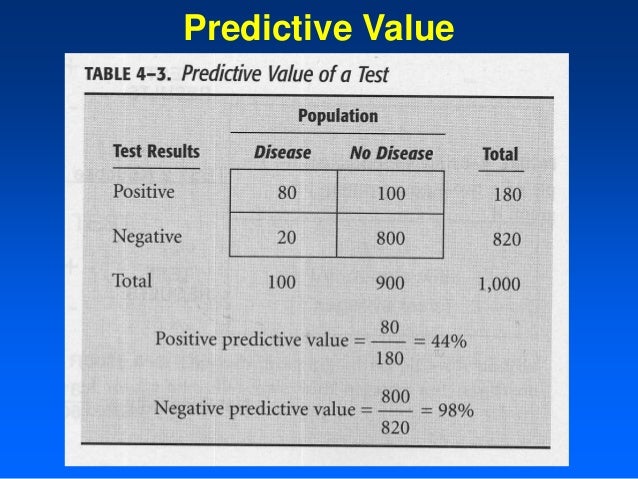
- #Net sensitivity for sequential testing pdf#
- #Net sensitivity for sequential testing license#
- #Net sensitivity for sequential testing professional#
Each trainee had completed a 38-hour teaching program and a logbook of 30 scans prior to enrollment. Sequential testing methods were used in the analysis of this data to see if they could be used to help in the assessment of competence. Assessment of left ventricular (LV) function by the trainee and expert was compared. FCU was performed sequentially by an intensive care trainee and expert on the same patient. This was a planned exploratory reanalysis of previously prospectively collected data. We report our experience of how the use of sequential testing may help personalize the assessment of FCU competence. It has been suggested that innovation in the assessment of FCU competence is needed and that competency assessment needs to be more individualized.
#Net sensitivity for sequential testing professional#
Varying numbers of scans are required by different professional bodies before focused cardiac ultrasound (FCU) competence is assumed. The work cannot be changed in any way or used commercially without permission from the journal.
#Net sensitivity for sequential testing license#
This is an open-access article distributed under the terms of the Creative Commons Attribution-Non Commercial-No Derivatives License 4.0 (CCBY-NC-ND), where it is permissible to download and share the work provided it is properly cited.


This work was performed at Epworth Richmond, 89 Bridge Rd, Richmond, VIC 3121, Australia.įor information regarding this article, E-mail: The authors have disclosed that they do not have any potential conflicts of interest. Supported, in part, by a grant from the Epworth Research Institute and registered (Trial registration: NCT02961439) for data collection.
#Net sensitivity for sequential testing pdf#
Direct URL citations appear in the printed text and are provided in the HTML and PDF versions of this article on the journal’s website ( ). Supplemental digital content is available for this article. Sequential screening can be introduced successfully into clinical practice, is effective, and can reduce the number of invasive tests that are performed.1 Intensive Care Unit, Epworth HealthCare, Melbourne, VIC, Australia.Ģ Research Development and Governance, Epworth HealthCare, Melbourne, VIC, Australia.ģ Department of Health Sciences and Biostatistics, Swinburne University of Technology, Melbourne, VIC, Australia.Ĥ Department of Medical Education, University of Melbourne, Melbourne, VIC, Australia. Six of 10 chromosome abnormalities (60%) were identified by first-trimester screening, and 9 of 10 chromosome abnormalities (90%) were identified by sequential screening. In unaffected pregnancies, the addition of the second-trimester testing reduced the median Down syndrome risk from 1:2368 to 1:10,301. Of 1528 women who received first-trimester screening, 133 women (8.7%) had an indication for invasive testing that was based on first-trimester results alone 1173 women (76.8%) received second-trimester tests, which reduced the net number of women with an indication for invasive testing to 105 (6.9%). Screen-positive rates, use of second-trimester testing and invasive testing, sensitivity, and changes in risks were evaluated.

Women who received first-trimester screening were also offered second-trimester tests with second-trimester risks that were based on both sets of markers. The purpose of this study was to evaluate stepwise sequential screening for fetal aneuploidy.


 0 kommentar(er)
0 kommentar(er)
